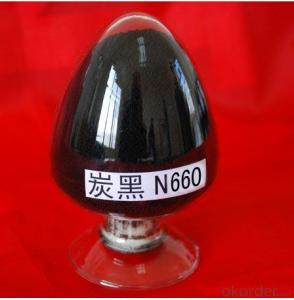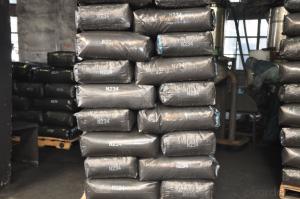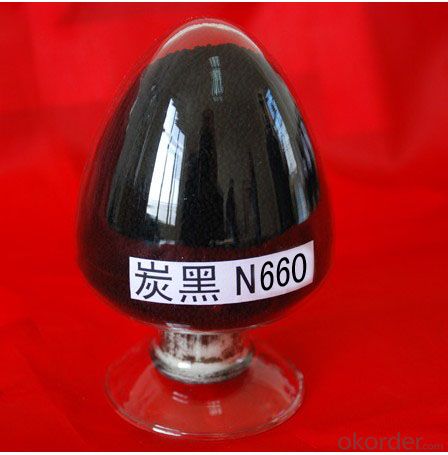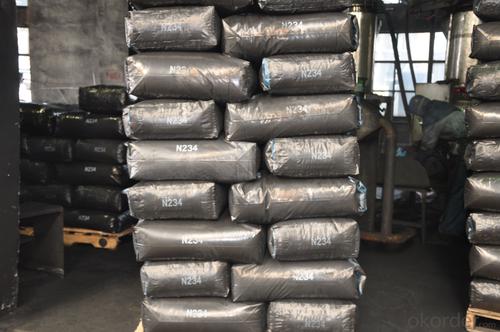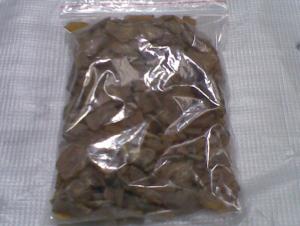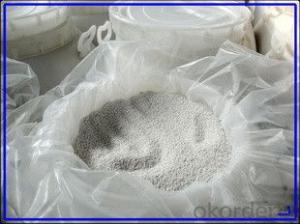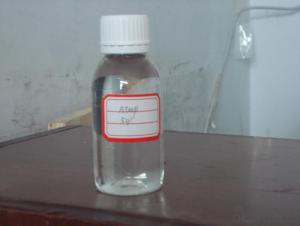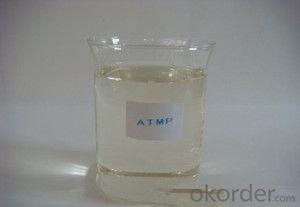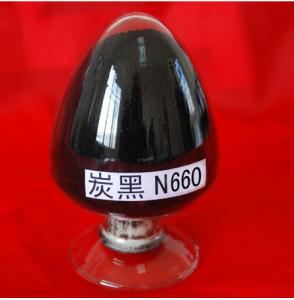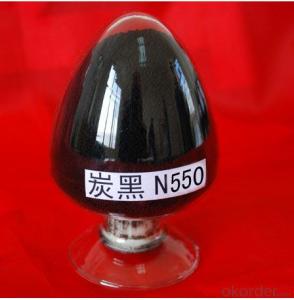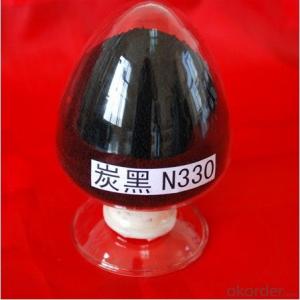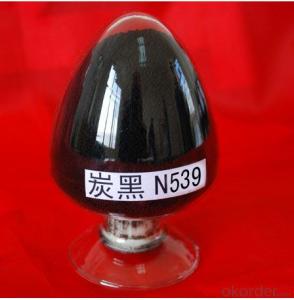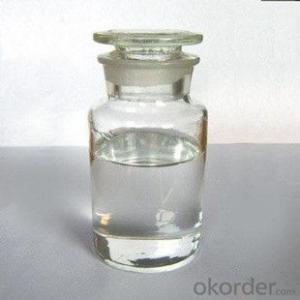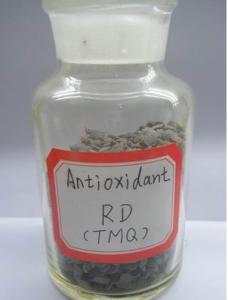Carbon Black N660 Granluar
- Loading Port:
- Tianjin
- Payment Terms:
- TT OR LC
- Min Order Qty:
- -
- Supply Capability:
- 10000MT m.t./month
OKorder Service Pledge
OKorder Financial Service
You Might Also Like
Carbon Black N660 (Granule)
Product Description:
Carbon Black N660:
1.Usage Rubber Auxiliary Agents ;
2.Product Status: Black powder or granular;
3.Standard: ISO 9001:2000
We are a carbon black Group company and have three factories in Shandong and Shanxi province of China, and the big one have get ISO certification. Our carbon black is the best ten brand approved by China carbon black quality certification, and very popular in the domestic and international market. Our group has 100,000-ton annual output and 13-year production history. We can supply all the types you need from low to high standard. We trust we have ability to supply you high quality and competitive price for you.
Suggest for Use:
(1)uses for the tire ply, sidewall and the pressure out, calendered products rubber compound.
(2)The usage and to the FDA for natural rubber and various synthetic rubber, easily dispersed, can give quite a high of rubber, extrusion speed, pressure the surface is smooth, mouth-type expansion is small, vulcanized rubber high temperature performance and excellent thermal conductivity, reinforcement, flexibility, and better resilience. Mainly used in tire cord layer, sidewall and the pressure out, calendered products rubber compound. This product is best for the butyl rubber inner tube and used with the N660.
TDS of the Carbon Black N660
Product Varieties | N660 | Pouring density(kg/m3) | 400~480 |
Iodine absorption Value(g/kg) | 32~40 | 300%modulus(Mpa) | -3.6~-1.6 |
DBP absorption Value (10-5m2/kg) | 85~95 | Ash content | ≤0.7% |
24Mn DBP(10-5m2/kg) | 69~79 | 45um sieve residue | ≤0.05% |
CTAB surface area(103m2/kg) | 31~41 | 500um sieve residue | ≤0.001% |
STSA/(103m2/kg) | 29~39 | Impurity | NO |
Nsa surface area(103m2/kg) | 31~39 | Fine content | ≤10% |
Tint strength(%) | ------ | Tensile strength(Mpa ) | ≥-4.5 |
Heatloss(%) | ≤1.5 | Elongation at failure | ≥-10% |
Safety:
As a matter of good industrial hygiene, gloves and safety glasses with side shields or better eye protection should be worn when handing Carbon Black ,For more information, refer to the MSDS.

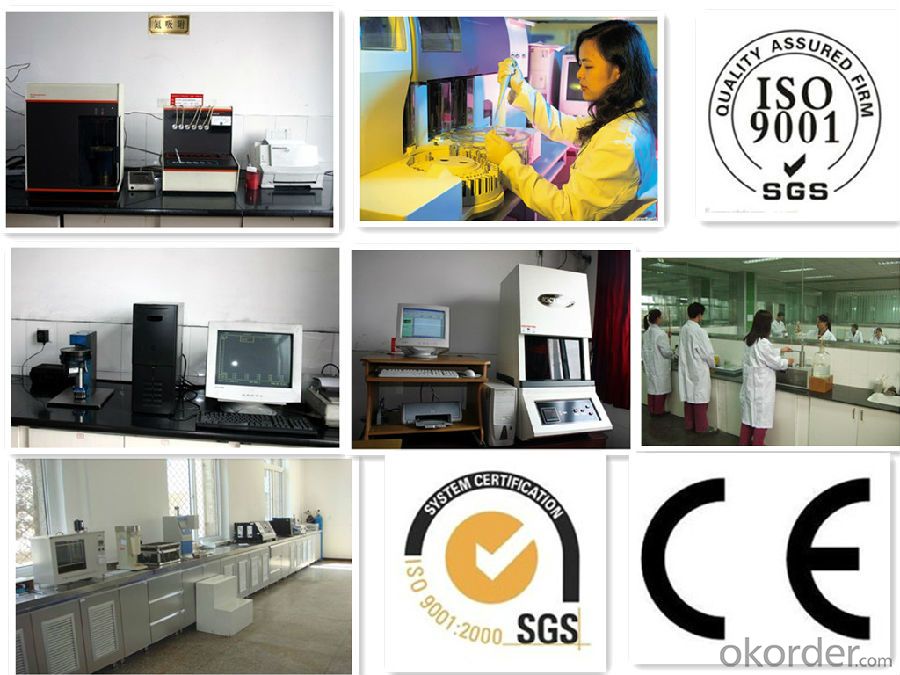

- Q: High chemistry: Does the catalyst affect the heat and heat of the reaction?
- No effect
- Q: Characteristics and types of catalysts?
- Catalysts don't undergo any change. and types of catalysts - 1) Homogeneous Catalysts ( Having same phase that of reactant, product i.e. reactant and product and catalysts all are either liquid or gas or solid.). 2) Hetrogenrous Catalysts (Different Phase than that of reactant and product. 3) Autocatalysts (reaction proceed catalysed as product is formed or product catalyse the reaction.)
- Q: Like biological and industrial reations. Thanks.
- Reactions that have high Activation Energy need catalysts to speed up reactions. These reactions aren't spontaneous since the reactants do not have enough energy to overcome the activation energy barrier. Catalysts are compounds that speed up reactions by providing an alternative pathway for the reaction. It is a common misconception that catalysts lower the activation energy. It doesn't actually lower the activation energy, instead it provides an alternative pathway with lower activation energy. For example, breakdown of hydrogen peroxide happens in nature but, relatively slowly. When you add a little bit of manganese dioxide, the breakdown happens a lot faster. Another example is, breakdown of glucose in the body. It is facilitated by an enzyme called amylase (or carbohydrase). An industrial example is the use of vanadium pentoxide (V2O5) in the Contact process, where SO2 is converted to SO3 in the presence of V2O5. Hope that helps!
- Q: pls give one or two catalysts that are used in the industry for example:Rhodium catalyst in a catalytic converter of a car or the Iron catalyst for making ammoniaTHANKS :)
- u . s . a . of america has an excellent style of organic gas. In theory that's accessible to have an electric powered motor force a compressor to take the low stress gas to make it dense adequate to get adequate interior the vehicle to run for a mutually as (in actuality, gas stations with organic gas pumps do it precisely like that, that's no longer trucked to them, we've a pair in Dallas) the real undertaking is that, specific it will be pressurized, requiring a greater perfect tank than propane, that's a liquid interior the tank, and the tank must be a cumbersome cylinder for capability or numerous smaller cylinders area by making use of area. Getting this into the physique of the vehicle devoid of doing away with all the storage/bags area isn't ordinary. And ultimate efforts nevertheless finally end up with the miles in line with fill up being decrease than the gas which inserts in a small area.
- Q: what is a catalyst?
- A catalyst helps make a reaction go forward faster or slower but a catalyst is not consumed by the reaction itself. The catalyst may participate in multiple chemical transformations. Catalysts that speed the reaction are called positive catalysts. Catalysts that slow down the reaction are called negative catalysts or inhibitors. Substances that increase the activity of catalysts are called promoters and substances that deactivate catalysts are called catalytic poisons. For instance, in the reduction of ethyne to ethene, the catalyst is palladium (Pd) partly poisoned with lead(II) acetate (Pb(CH3COO)2). Without the deactivation of the catalyst, the ethene produced will be further reduced to ethane
- Q: Brief introduction of enzyme as biocatalyst and general chemical catalyst and its personality
- enzyme inactivation (4) enzyme activity can be timely and effective regulation (5) the role of the enzyme conditions are more moderate (6) most of the enzyme (1) the catalytic efficiency is very high (2) Of the catalytic activity is often associated with coenzymes, auxiliary or metal ions, and some enzyme activity also need RNA as a cofactor Caixing, such as telomerase
- Q: Which chemical reaction is added to the catalyst in order to slow down the reaction
- Edible oil added 0.01% to 0.02% gallate n-propyl ester, you can effectively prevent rancidity
- Q: Now, i am studying for my biology exam in 3 weeks time...i stumbled upon catalase, and then checked my book its catalyst...now im confused...is there a different among these 2 terms? i think..catalyst is the when a substance brings up or about a chemical reaction without using itself up and then catalase breaks down the toxic by-product of metabolism, hydrogen peroxide, into water and oxygen.Or am i wrong?please explain what is catalyst and catalase in biology or are they the same, just differently?
- Catalysts and catalase are two different things, and the definitions that you listed are correct. A catalyst is something that speeds up the rate of a chemical reaction. Many chemical reactions occur naturally and do not require any energy, but they occur so slowly that they are not useful, and catalysts can be used in cases like this to speed up the process. For example iron metal exposed to oxygen and water turns to rust, but if you need a lot of rust by tomorrow, leaving a chunk of iron out in the rain is not a practical solution because it will take too long to convert all that iron metal into rust.
- Q: Is there a catalyst in the chemical shop?
- If it is like vanadium pentoxide, which catalyzes sulfur dioxide, do not sell it because vanadium is highly toxic and most of the catalyst is expensive
Send your message to us
Carbon Black N660 Granluar
- Loading Port:
- Tianjin
- Payment Terms:
- TT OR LC
- Min Order Qty:
- -
- Supply Capability:
- 10000MT m.t./month
OKorder Service Pledge
OKorder Financial Service
Similar products
Hot products
Hot Searches
Related keywords
